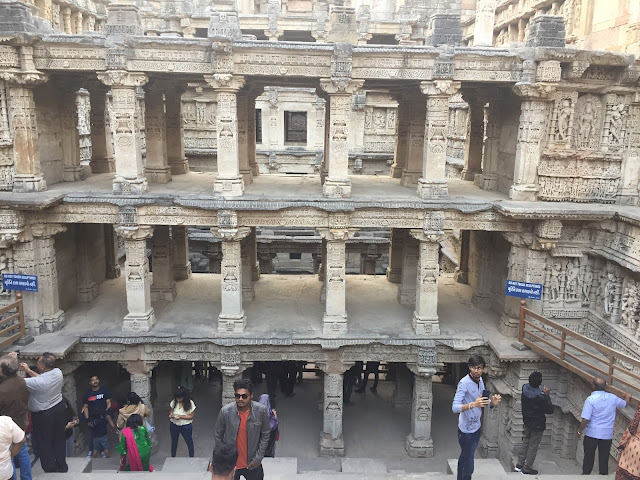9 Stepwells in India one must visit
Among the large number of stepwells that still exist in India, some are absolutely spectacular and worth visiting. Here is a list of 9 of the most wonderful stepwells in India one must visit. Though I love all of them, I have tried to make the list in a descending order of how I would rank them from an architectural/ aesthetic point of view.
1. Rani Ki Vav, Patan:
Built in the 11th century by Queen Udayamati in memory of her husband King Bhima I of the Chaulukya dynasty, Rani Ki Vav is a masterpiece in architecture. The sheer size, intricate sculptures and magnificent structure are absolutely awe-inspiring! There are more than 1500 sculptures depicting religious, mythological stories and other themes like portraying everyday life of people. In course of time due to severe floods, the step well was buried under the earth. It has been designated as a UNESCO World Heritage Site in 2014.
2. Chand Baori, Abhaneri
One of the deepest and largest stepwells in India, Chand Baori was built in the 9th century by King Chand of the Pratihara dynasty, though no definitive evidence is available. It's a 13 floors structure with 3500 steps descending 30 meters to the water level.
3. Adalaj Ni Vav, Ahmedabad:
Constructed in 1498 in memory of Rana Veer Singh of the Vaghela dynasty by his queen Rudadevi. The architecture of the building is massive (five storeys) and magnificent, worth spending a few hours.
4. Shahi Baori, Lucknow:
5. Agrasen ki Baoli, Delhi:
Though there is no evidence, it's believed to be built some 5000 years ago during the Mahabharat times by the king Agrasen or Ugrasen, the impressive stepwell is situated right in the middle of bustling capital city of India- Delhi.
6. Surya kund at Modhera sun temple, Mehsana:
7. Toorji Ka Jhalra, Jodhpur:
Hampi, a major UNESCO World Heritage Site in India, has a well preserved stepwell. Built in the 15th century by the rulers of Vijayanagara empire, it now is an important tourist attraction in Hampi. Though most of the temples in Hampi had a stepwell for religious purposes, this one stands out.
Rajon ki baoli was built in 1506 by Daulat Khan, an administrator under Sikander Lodhi during Delhi sultanate period. Though it was primarily used by the masons, its elaborate structure signifies much wider use for socio-cultural purposes too.
In the old city of Jodhpur, just a few hundred meters from the clock tower, there is an amazing stepwell called Toorji ka Jhalra. It was built by the queen Tanwar ji, in the memory of her husband Raja Abhay Singh of Jodhpur in 1740.
8. Pushkarani, Hampi:
9. Rajon ki Baoli, Delhi:
For an elaborate reading on the subject, please click on the link below:




Superb....
ReplyDeleteWonderful and detailed information of stepwells! Nice checklist 👍
ReplyDelete